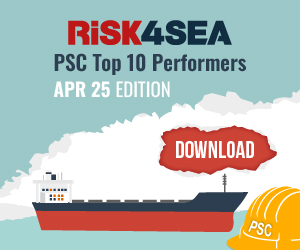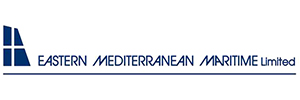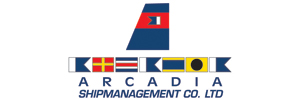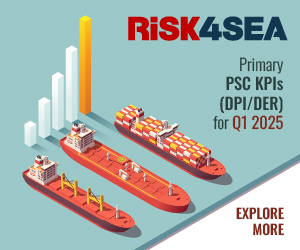The maritime industry is facing a sharp rise in machinery failures and engine-room incidents that modern monitoring systems could help prevent, according to CM Technologies (CMT).
With classification society DNV reporting a 20% increase in machinery damage failures during 2024 and engine room fires accounting for more than half of all marine equipment-related insurance claims, CMT points out that advanced diagnostics and monitoring solutions are not just ‘nice to have’ but should be considered as essential safety tools.
Engine and machinery failures continue to catch crews and operators off guard, but effective system monitoring will alert crews to looming catastrophe.
…said Uwe Krüger, Managing Director, CM Technologies.
According to DNV’s ‘Maritime Safety Trends 2014-2024 Preparing for Future Risks’, published during the Nor-Shipping 2025, the number of maritime safety incidents has increased by 42% between 2018 and 2024, despite the global fleet growing by just 10%.
Additionally, machinery damage/failure was responsible for the highest number of casualty incidents in all years, with this climbing to 60% of all cases in 2024 – up from 38% a decade ago. Among other findings, the report notes a rise in fire and explosion incidents, with a 42% increase in the past four years.
Citing as an example the root cause of the engine-room fire aboard the cargo vessel Stride in January, Krüger said that even small oversights, such as an incorrectly installed or damaged valve, can result in fatal accidents.
Modern acoustic sensors could have picked up abnormal pressure signatures or vibration patterns as soon as the valve began to operate. That kind of early warning can be the difference between a manageable maintenance event and catastrophic failure
…explained Krüger.
Moreover David Fuhlbrügge, Co-Managing Director, CMT, added that machinery failures remain the leading cause of shipping casualties, accounting for 60% of all marine equipment-related incidents. Ships aged 25 years or older are particularly vulnerable but failures are caused by issues that engine and machinery performance optimisers can easily detect.
According to DNV, the data shows a clear correlation between vessel age and operational reliability with incidents involving vessels more than 25 years old, accounting for 41% of all reported cases, up from 32% in 2014. Across all age groups machinery damage/failure incidents grew by 20% in 2024.
Referring to the fire onboard Ocean Navigator earlier this year, Fuhlbrügge said an effective monitoring programme could have identified contamination and debris in the auxiliary diesel’s lube oil before it caused the failure that sparked the fire.
Too often, we see cases where seemingly minor issues spiral into significant failures. By the time these problems are identified during scheduled maintenance, the damage is already done. The early warning technology to detect these signs in real time already exists.
…said Fuhlbrügge.
Commenting on the risks associated with older vessels, where maintenance is deferred or relies solely on periodic inspections, Fuhlbrügge said continuous monitoring can reveal the “subtle degradation” that leads to unexpected breakdowns.
Machinery failures rarely happen overnight; they are consequent of a series of events over a period of time. Every percentage point of efficiency lost, every small increase in vibration, every piece of debris in the lube oil system is a warning sign. We need to pay closer attention to these details.
…Uwe Krüger.


































































